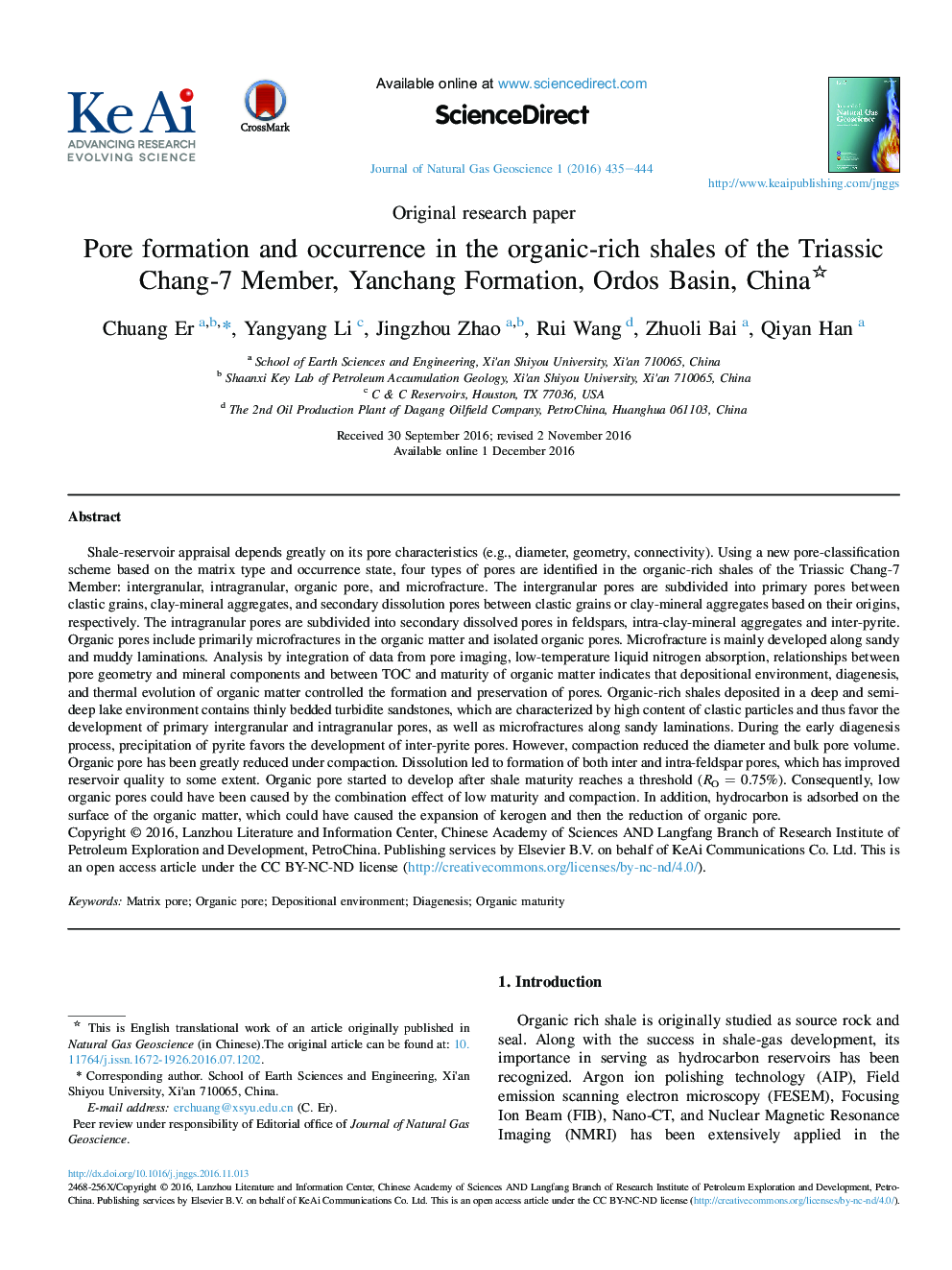| کد مقاله | کد نشریه | سال انتشار | مقاله انگلیسی | نسخه تمام متن |
|---|---|---|---|---|
| 8124236 | 1522745 | 2016 | 10 صفحه PDF | دانلود رایگان |
عنوان انگلیسی مقاله ISI
Pore formation and occurrence in the organic-rich shales of the Triassic Chang-7 Member, Yanchang Formation, Ordos Basin, China
ترجمه فارسی عنوان
شکل گیری و وقوع پوسته در شیل های غنی ارگانیک عضو تریاس چانگ -7، سازند یانچانگ، حوضه رود اردو، چین
دانلود مقاله + سفارش ترجمه
دانلود مقاله ISI انگلیسی
رایگان برای ایرانیان
کلمات کلیدی
ماتریکس منفذ، منافذ ارگانیک، محیط رسوبی، تشخیص، بلوغ ارگانیک،
موضوعات مرتبط
مهندسی و علوم پایه
علوم زمین و سیارات
ژئوشیمی و پترولوژی
چکیده انگلیسی
Shale-reservoir appraisal depends greatly on its pore characteristics (e.g., diameter, geometry, connectivity). Using a new pore-classification scheme based on the matrix type and occurrence state, four types of pores are identified in the organic-rich shales of the Triassic Chang-7 Member: intergranular, intragranular, organic pore, and microfracture. The intergranular pores are subdivided into primary pores between clastic grains, clay-mineral aggregates, and secondary dissolution pores between clastic grains or clay-mineral aggregates based on their origins, respectively. The intragranular pores are subdivided into secondary dissolved pores in feldspars, intra-clay-mineral aggregates and inter-pyrite. Organic pores include primarily microfractures in the organic matter and isolated organic pores. Microfracture is mainly developed along sandy and muddy laminations. Analysis by integration of data from pore imaging, low-temperature liquid nitrogen absorption, relationships between pore geometry and mineral components and between TOC and maturity of organic matter indicates that depositional environment, diagenesis, and thermal evolution of organic matter controlled the formation and preservation of pores. Organic-rich shales deposited in a deep and semi-deep lake environment contains thinly bedded turbidite sandstones, which are characterized by high content of clastic particles and thus favor the development of primary intergranular and intragranular pores, as well as microfractures along sandy laminations. During the early diagenesis process, precipitation of pyrite favors the development of inter-pyrite pores. However, compaction reduced the diameter and bulk pore volume. Organic pore has been greatly reduced under compaction. Dissolution led to formation of both inter and intra-feldspar pores, which has improved reservoir quality to some extent. Organic pore started to develop after shale maturity reaches a threshold (RO = 0.75%). Consequently, low organic pores could have been caused by the combination effect of low maturity and compaction. In addition, hydrocarbon is adsorbed on the surface of the organic matter, which could have caused the expansion of kerogen and then the reduction of organic pore.
ناشر
Database: Elsevier - ScienceDirect (ساینس دایرکت)
Journal: Journal of Natural Gas Geoscience - Volume 1, Issue 6, December 2016, Pages 435-444
Journal: Journal of Natural Gas Geoscience - Volume 1, Issue 6, December 2016, Pages 435-444
نویسندگان
Chuang Er, Yangyang Li, Jingzhou Zhao, Rui Wang, Zhuoli Bai, Qiyan Han,
